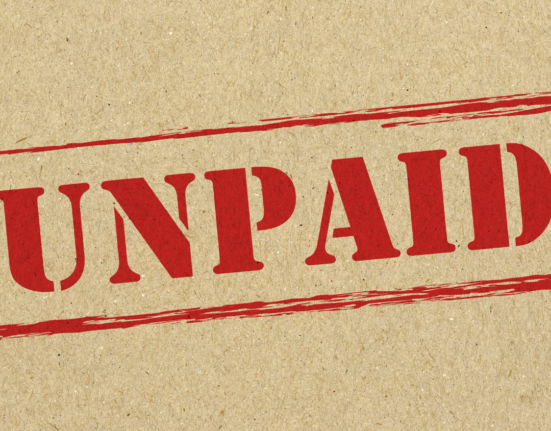How long can a business lose money before it becomes unsustainable? Every entrepreneur faces this pressing question at some point. The journey through financial dips isn’t just about survival; it’s a test of strategic acumen and endurance. In this blog post, I will explore the reasons behind operating losses and evaluate the factors that determine how long a business can withstand them.
Without further ado, lets start the discussion.
Why Does Business Lose Money?
Businesses can lose money for a variety of reasons, often due to both internal and external factors. Here are some common causes:
High Startup Costs
High initial expenses in technology and market expansion often cause startups to incur losses. Amazon exemplifies this. The company chose long-term growth over short-term profitability, leading to initial financial losses. This approach is common in tech startups aiming for large-scale market influence.
Poor Financial Management
Inadequate financial management, including poor budgeting and debt management, can bankrupt a company. Toys “R” Us serves as an example. The brand’s inability to adapt to market changes and manage its debts contributed to its closure.
Economic Downturns
Economic recessions can lead to decreased consumer spending, severely affecting businesses. During the 2008 financial crisis, numerous retail businesses experienced substantial losses due to a sharp decline in consumer demand.
Increased Competition
When new competitors enter the market or when price wars occur, profits can decrease significantly. One of the best examples in this context is what Netflix faced. Netflix went through challenges maintaining its growth and profitability due to emerging competitors like Disney+ and HBO Max.
Operational Inefficiencies
High overhead and inefficient processes can drain a business’s resources. For example, Kodak used to be a leader in photography. However, the company failed to efficiently transition to digital, leading to its bankruptcy despite its early technological advancements.
Regulatory Changes
Sudden regulatory changes can impose costly adaptations for businesses. The tobacco industry, for example, has faced profitability challenges due to increasingly stringent regulations worldwide, impacting its market operations.
Shifts in Market Demand
Changes in consumer preferences or technological advancements can render a product or service obsolete. BlackBerry struggled to maintain its market share as smartphones from Apple and Android gained popularity. This leads to significant financial losses.
Poor Strategic Decisions
Flawed strategic decisions, such as misguided product launches or failed acquisitions, can result in heavy losses. Microsoft’s acquisition of Nokia’s mobile unit is a prominent example. The company’s attempt to enter the mobile market failed to gain traction, leading to considerable financial setbacks.
Can a Business Survive While Losing Money?
Yes, a business can survive while losing money. However, this survival largely depends on the nature of the losses and the business’s strategy to overcome them. For instance, startups often operate at a loss initially as they invest in technology, market expansion, and brand establishment. Amazon did not make a profit initially, focusing instead on massive growth and market capture.
Similarly, companies like Uber and Spotify have also sustained prolonged periods of losses. These companies leverage investor confidence and capital reserves to sustain operations with the belief that future profitability will justify the early losses. The key is maintaining enough liquidity to keep the business running and convincing stakeholders of long-term viability.
To survive while losing money, businesses can adopt several strategies:
- Secure Investments: Attracting new investors or securing more capital from existing ones can provide necessary funds.
- Cut Costs: Reducing operational expenses without compromising product quality can help minimize losses.
- Innovate: Adjusting the business model or offering new products/services can open additional revenue streams.
- Focus on Core Strengths: Concentrating on the most profitable parts of the business can stabilize finances.
- Do Long-term Planning: Developing a clear, strategic plan for achieving profitability is crucial.
These strategies demonstrate that while enduring losses is challenging, with careful management and strategic planning, businesses can navigate through this phase and emerge profitable.
Factors that Affect How Long a Business Losing Money
How long a business can lose money depends on various factors. These factors influence the company’s financial endurance and strategic decisions. Let’s have a look at the factors:
Capital Reserves
A business’s ability to sustain losses greatly depends on its capital reserves. Companies with substantial cash reserves can afford to operate in the red for longer periods, investing in growth or enduring downturns. For example, startups like SpaceX used significant initial funding to operate at a loss while developing their technology and market presence. This strategic use of capital reserves is vital for long-term projects that have delayed profitability.
Access to Financing
The availability of external financing through loans, investors, or credit lines can extend the period a business can endure losses. This lifeline supports operations until the business becomes self-sustaining. Netflix, for instance, continued borrowing heavily to fund content creation, relying on future subscriber growth to offset these costs. The ability to secure financing often hinges on maintaining credible business plans and potential market success.
Cost Structure
A business’s cost structure can determine its flexibility in managing expenses during financial lows. Companies with high fixed costs face more difficulties in reducing expenses quickly compared to those with variable costs. Adjusting operational costs dynamically in response to revenue changes helps manage losses effectively. For example, airlines manage costs by varying flight availability and staff needs based on demand.
Revenue Streams
Diversifying revenue streams can cushion a business against downturns in one segment. Companies that rely on a single product or market are more vulnerable during economic shifts. Apple’s evolution from just computers to a variety of tech products and services, including software and entertainment, exemplifies successful diversification. This strategy stabilizes income and reduces the risk of fatal losses.
Market Demand
Continuous market demand for a business’s products or services is crucial for survival. Even minimal demand can keep a company afloat and cover essential costs while strategies are adjusted. A company like Tesla saw sustained demand for electric cars despite years of financial losses, which helped fund further development and expansion plans.
Management Strategies
Effective management involves making strategic decisions that can lead to a turnaround from loss to profit. Strong leadership navigates through downturns by making tough choices on cost-cutting, restructuring, or exploring new markets. IBM’s shift from hardware to cloud computing and services under strategic management guidance helped it recover from potential obsolescence and return to profitability.
Investor Confidence
Investor support can vary based on their confidence in the business’s future. High confidence often results in continued financial support through difficult periods. Amazon maintained high investor confidence despite years of losses, with stakeholders betting on its long-term growth strategy and market expansion plans. Their patience and support were crucial during Amazon’s early years of significant investment and expansion.
Industry Trends
Being part of a growing industry can provide a business with more leeway to incur losses. Companies in high-growth sectors like technology and renewable energy might lose money initially but are seen as good long-term bets due to their potential market size and impact. Solar energy companies, for example, may operate at losses while establishing their market presence and technology.
Economic Conditions
The broader economic environment impacts how long a business can sustain losses. During recessions, consumer spending drops, and financing becomes harder to secure, forcing businesses to either adapt quickly or fail. The 2008 financial crisis exemplifies how external economic conditions can drastically shorten a business’s runway to cover losses.
Regulatory Environment
Regulatory changes can impose additional costs or open up new opportunities for businesses. Companies operating in highly regulated industries, like healthcare and finance, must be agile in adapting to new laws that could increase operational costs or restrict certain activities. Conversely, favorable regulations may provide subsidies or tax breaks that can mitigate losses.
The duration a business can sustain losses hinges on effectively managing these critical factors to navigate through financial challenges. Reach out for a consultation to tailor these strategies to your business needs!
Wrapping it up,
Every business faces financial challenges. Understand key factors to determine how long a business can lose money. Manage these aspects effectively. Eventually, you will enhance your company’s resilience and pave the way for long-term success.
Additional Resources:
How Long Can a Small Business Survive Without Profit?
Why Selling Your Business Is a Good Thing – Understanding the Benefits







